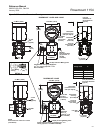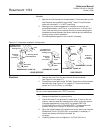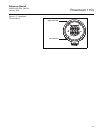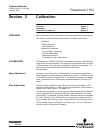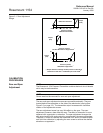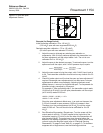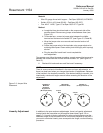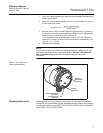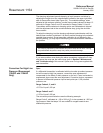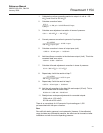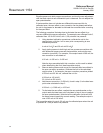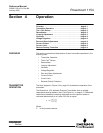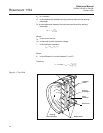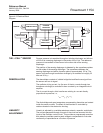
Reference Manual
00809-0100-4514, Rev BA
January 2008
Rosemount 1154
3-4
Material
• Wire: 22-gauge tinned solid copper – Fed Spec QQW343, ASTM B33
• Solder: 60% tin, 40% lead (60/40) – Fed Spec QQ-S-571
• Flux: MIL F 14256, Type A, Fed Spec QQ-S-571 Type RA
Method
a. Locate the three turret terminals on the component side of the
amplifier board. Remove any jumper wires between them (see
Figure 3-3).
b. To elevate zero, connect a jumper wire between the middle
terminal and the terminal marked “EZ” (see Figure 3-3, Detail B).
c. Wrap the jumper wire once around each terminal and cut off
any excess.
d. Solder the jumper wire to the terminals using proper electronics
soldering techniques. Clean solder joints thoroughly with isopropyl
alcohol.
e. Plug the amplifier board back in and complete the
zero adjustment.
To suppress zero, follow the same procedure, except connect the jumper wire
between the middle terminal and the terminal marked “SZ” (see Figure 3-3,
Detail C).
6. Recheck full scale and zero and fine tune if necessary.
NOTE
There is some mechanical backlash in the zero and span adjustments, so
there is a dead band when you change the direction of adjustment. Because
of the backlash, the simplest procedure, if the desired setting is overshot, is to
intentionally overshoot a larger amount before reversing the direction of the
adjustment.
Figure 3-3. Jumper Wire
Placement.
Linearity Adjustment In addition to the span and zero adjustments, there is a linearity adjustment
located inside the transmitter on the amplifier board (see Figure 3-4 on
page 3-5). Linearity is factory calibrated for optimum performance over the
calibrated range of the instrument and is not normally adjusted in the field. If
you want to maximize linearity over some particular range, use the following
procedure:
DETAIL B
(To Elevate Zero)
DETAIL C
(To Suppress Zero)
DETAIL A
Moderate
Elevation/
Suppression
(No Jumper Wire)
Jumper
Wire
Jumper
Wire




